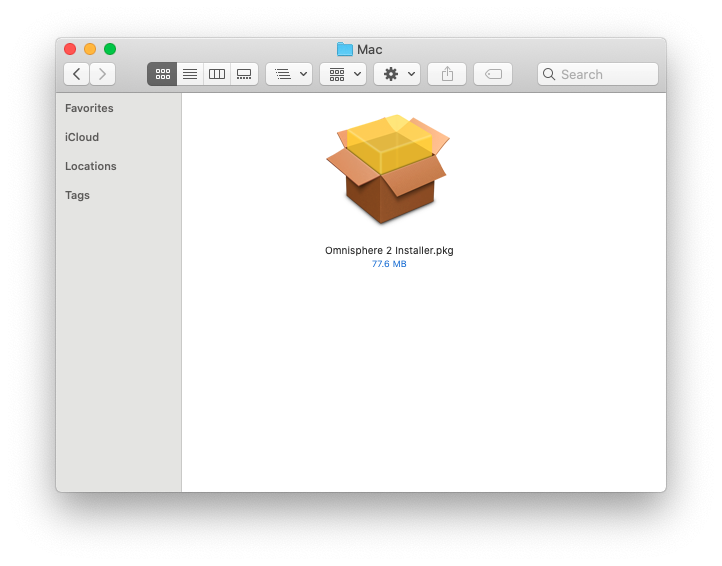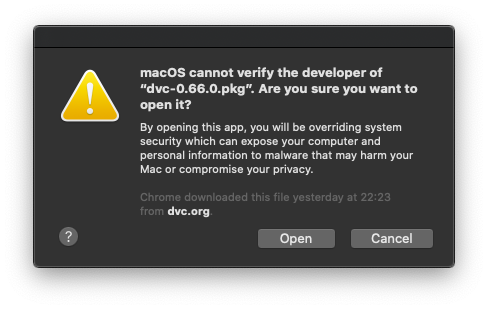
Recommended software programs are sorted by OS platform (Windows, macOS, Linux, iOS, Android etc.) and possible program actions that can be done with the file: like open pkg file, edit pkg file, convert pkg file, view pkg file, play pkg file etc. (if exist software for corresponding action in File-Extensions.org's database). Hint: Click on the tab below to simply browse between the. The '.pkg' is an extension for the package of compressed installer files that are usually used to install a software program, and they are mostly used for installing applications in Mac OS X. These files may be installed individually or they can as well be referenced using an installer script which is part of the software.
This directory contains binaries for a base distribution and packages to run on Mac OS X (release 10.6 and above). Mac OS 8.6 to 9.2 (and Mac OS X 10.1) are no longer supported but you can find the last supported release of R for these systems (which is R 1.7.1) here. Releases for old Mac OS X systems (through Mac OS X 10.5) and PowerPC Macs can be found in the old directory.
Note: CRAN does not have Mac OS X systems and cannot check these binaries for viruses.Although we take precautions when assembling binaries, please use the normal precautions with downloaded executables.
Package binaries for R versions older than 3.2.0 are only available from the CRAN archive so users of such versions should adjust the CRAN mirror setting (https://cran-archive.r-project.org) accordingly.

R 4.0.3 'Bunny-Wunnies Freak Out' released on 2020/10/10
Please check the MD5 checksum of the downloaded image to ensure that it has not been tampered with or corrupted during the mirroring process. For example type
openssl sha1 R-4.0.3.pkg
in the Terminal application to print the SHA1 checksum for the R-4.0.3.pkg image. On Mac OS X 10.7 and later you can also validate the signature using
pkgutil --check-signature R-4.0.3.pkg
Latest release:
| R-4.0.3.pkg (notarized and signed) SHA1-hash: 8402f586aef1fdb12c6e34c73b286f87318fb1be (ca. 85MB) | R 4.0.3 binary for macOS 10.13 (High Sierra) and higher, signed and notarized package. Contains R 4.0.3 framework, R.app GUI 1.73 in 64-bit for Intel Macs, Tcl/Tk 8.6.6 X11 libraries and Texinfo 6.7. The latter two components are optional and can be ommitted when choosing 'custom install', they are only needed if you want to use the tcltk R package or build package documentation from sources. Note: the use of X11 (including tcltk) requires XQuartz to be installed since it is no longer part of OS X. Always re-install XQuartz when upgrading your macOS to a new major version. Important: this release uses Xcode 10.1 and GNU Fortran 8.2. If you wish to compile R packages from sources, you will need to download and GNU Fortran 8.2 - see the tools directory. |
| NEWS (for Mac GUI) | News features and changes in the R.app Mac GUI |
| Mac-GUI-1.73.tar.gz SHA1-hash: 7f4b1d050757ce78545bdeb9d178a69d13046aa1 | Sources for the R.app GUI 1.73 for Mac OS X. This file is only needed if you want to join the development of the GUI, it is not intended for regular users. Read the INSTALL file for further instructions. |
Note: Previous R versions for El Capitan can be found in the el-capitan/base directory.Binaries for legacy OS X systems: | |
| R-3.6.3.nn.pkg (signed) SHA1-hash: c462c9b1f9b45d778f05b8d9aa25a9123b3557c4 (ca. 77MB) | R 3.6.3 binary for OS X 10.11 (El Capitan) and higher, signed package. Contains R 3.6.3 framework, R.app GUI 1.70 in 64-bit for Intel Macs, Tcl/Tk 8.6.6 X11 libraries and Texinfo 5.2. The latter two components are optional and can be ommitted when choosing 'custom install', they are only needed if you want to use the tcltk R package or build package documentation from sources. |
| R-3.3.3.pkg MD5-hash: 893ba010f303e666e19f86e4800f1fbf SHA1-hash: 5ae71b000b15805f95f38c08c45972d51ce3d027 (ca. 71MB) | R 3.3.3 binary for Mac OS X 10.9 (Mavericks) and higher, signed package. Contains R 3.3.3 framework, R.app GUI 1.69 in 64-bit for Intel Macs, Tcl/Tk 8.6.0 X11 libraries and Texinfo 5.2. The latter two components are optional and can be ommitted when choosing 'custom install', it is only needed if you want to use the tcltk R package or build package documentation from sources. Note: the use of X11 (including tcltk) requires XQuartz to be installed since it is no longer part of OS X. Always re-install XQuartz when upgrading your OS X to a new major version. |
| R-3.2.1-snowleopard.pkg MD5-hash: 58fe9d01314d9cb75ff80ccfb914fd65 SHA1-hash: be6e91db12bac22a324f0cb51c7efa9063ece0d0 (ca. 68MB) | R 3.2.1 legacy binary for Mac OS X 10.6 (Snow Leopard) - 10.8 (Mountain Lion), signed package. Contains R 3.2.1 framework, R.app GUI 1.66 in 64-bit for Intel Macs. This package contains the R framework, 64-bit GUI (R.app), Tcl/Tk 8.6.0 X11 libraries and Texinfop 5.2. GNU Fortran is NOT included (needed if you want to compile packages from sources that contain FORTRAN code) please see the tools directory. NOTE: the binary support for OS X before Mavericks is being phased out, we do not expect further releases! |
Subdirectories:
| tools | Additional tools necessary for building R for Mac OS X: Universal GNU Fortran compiler for Mac OS X (see R for Mac tools page for details). |
| base | Binaries of R builds for macOS 10.13 or higher (High Sierra) |
| contrib | Binaries of package builds for macOS 10.13 or higher (High Sierra) |
| el-capitan | Binaries of package builds for OS X 10.11 or higher (El Capitan build) |
| mavericks | Binaries of package builds for Mac OS X 10.9 or higher (Mavericks build) |
| old | Previously released R versions for Mac OS X |
You may also want to read the R FAQ and R for Mac OS X FAQ. For discussion of Mac-related topics and reporting Mac-specific bugs, please use the R-SIG-Mac mailing list.
Information, tools and most recent daily builds of the R GUI, R-patched and R-devel can be found at http://mac.R-project.org/. Please visit that page especially during beta stages to help us test the Mac OS X binaries before final release!
Package maintainers should visit CRAN check summary page to see whether their package is compatible with the current build of R for Mac OS X.
Binary libraries for dependencies not present here are available from http://mac.R-project.org/libs and corresponding sources at http://mac.R-project.org/src.
Last modified: 2020/10/10, by Simon Urbanek
Step 1: Driver Installation
Software is supported for OSX 10.9 and above. The process in this document was tested in OSX 10.13.3. Download the driver from here, you may need to unzip it manually in older Mac Operating Systems.
Find the CH341SER_MAC directory in the Download directory and then double-click CH34x_Install_V1.4.pkg:
Follow the installer that pops up:
Keep going, and select 'Install' when prompted:
The following should pop up, select 'Continue Installation' to proceed:
After a moment you will be prompted to restart your computer. Doing so will complete the installation process. If you run into any issue like this:
It means that the CH340 USB driver extension is blocked by Mac. In order to allow the CH340 USB driver, go to Mac Security & Privacy and select 'Allow' as shown below:
Step 2: Software Installation
In order to begin, you must download the software. To do so, select this link. Afterwards, find the file, unzipping as needed, and find the candle.dmg file inside. Right click or control click the file and select 'Open' from the menu.
On the following Menu, right/control click the Candle Icon. Select “Open” again.

You will see a warning message. Select the “Open” button.

Candle will launch directly from this, and you're good to go!
Step 3: Configuring Candle
Connect your CNC via the USB cable and start Candle. Ideally you should see something like the screenshot below:
The red Alarm state in the status box is actually good! The 3018 and 4030 PROVer CNC's are fitted with limit switches and by default has ‘Homing’ enabled. Until a Homing Cycle has been run it will be in an Alarm state as it has no idea where the spindle is and will accept very few commands. You can also get out of this state by clicking on the padlock icon in the Control section of Candle to unlock the machine.
If you are not seeing the above image, you may see the following image below:
If it’s the second image, then Candle cannot find your router. Simply select the Service/Settings option from the top menu and you should see the settings menu:
Check that the Baud: value is 115200, if not change it, then Click on the connection/Port dropdown menu and select the COM port your router is connected to, there should not be many so if necessary try them each in turn. Click on OK and you should see first screen shown above, if not select the next COM port and retry.
Playing avi files mac. If all else fails check the USB cable connection to the router, as well as see if the Emergency Stop button is pressed (It shouldn't be) and retry.
Before proceeding any further, check some settings:
the Machine Information section set/check the following:
Rapid Speed should be set to 2000
Spindle Speed Min should be set to 0
Open Pkg Files
Spindle Speed Max should be set to 10000
Laser Power Min Should be set at 0
Laser Power Max Should be set at 10000
And hit OK. Your software is now configured and ready for use.